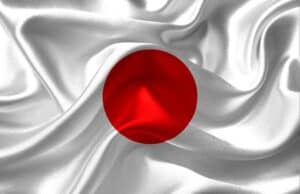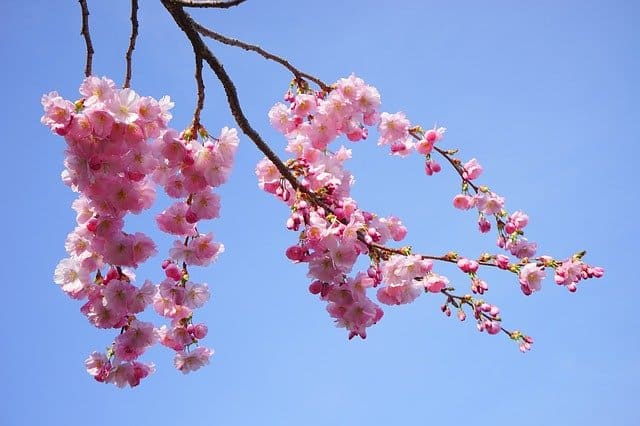A Beginner’s Guide to Japanese: Verbs and Adjectives

Do you want to learn Japanese, but don’t know where to start? If you want to learn how to use verbs and adjectives in Japanese, then this is the perfect place to start!
You may have heard that Japanese is a difficult language to learn. Well, that’s true, but learning Japanese is no more difficult than learning any other language, and the most important step is getting a good grasp of the basics.
So, in this article you will find a beginner’s guide to Japanese verbs, adjectives, and the present and past tense. To help you check your progress there are many opportunities to check your learning and test yourself, for instance, and the language is presented in both Kanji and Kana, as well as with Romaji (Roman-alphabet) spelling.
First, let’s look at how verbs work in Japanese.
How to use verbs in Japanese:
How do verbs in Japanese work?

In Japanese, verbs are called doushi ((動詞). Take a look at this list of common Japanese verbs. These are the verbs we will use in this article:
行く いく iku “to go”
働く はたらく hataraku “to work”
話す はなす hanasu “to speak”
考える かんがえる kangaeru “to think”
教える おしえる oshieru “to teach”
帰る かえる kaeru “to return home”
立つ たつ tatsu “to stand”
買う かう kau “to buy”
You should note that the above verbs are in dictionary form. However, for standard speech you need to change them into the present tense form. So, next let’s look at changing Japanese verbs into the most common form: present tense form.
Using Japanese verbs in the present tense.

Here are the same verbs in present tense form:
行きます ikimasu
働きます hatarakimasu
話します hanashimasu
考えます kangaemasu
教えます oshiemasu
帰ります kaerimasu
立ちます tachimasu
買います kaimasu
Now, you have probably noticed that it is not simply a case of removing the final character and adding “-masu.” This is because there are different types of verbs: “ru” verbs and “u” verbs. These follow slightly different rules, but we will look at this later.
Remember this present tense form, because once you know these you can easily change the verb into a negative or the past tense by changing the “-masu” stem.
Using Japanese verbs in negative form.

You can make verbs in Japanese negative simply by changing “–masu” to “-masen.”:
行きません ikimasen – “do/will not go”
働きません hatarakimasen – “do/will not work
話しません hanashimasen – “do/will not speak”
教えません oshiemasen – “do/will not teach”
考えません kangaemasen – “do/will not think”
帰りません kaerimasen – “do/will not go home”
立ちません tachimasen – “do/will not stand”
買いません kaimasen – “do/will not buy”
As you can see from the English translation, whether the form is present or future is dependent on the context of the verb’s use.
Using Japanese verbs in the past tense.

You can change verbs in Japanese into past tense by changing “-masu” to “-mashita”
行きました ikimashita – “went”
働きました hatarakimashita – “worked”
話しました hanashimashita – “spoke”
教えました oshiemashita – “taught”
考えました kangaemashita – “thought/considered”
帰りました kaerimashita – “went home”
立ちました tachimashita – “stood”
買いました kaimashita – “bought”
Making Japanese verbs both past tense and negative.
Lastly, you can make Japanese verbs both past tense and negative simply by adding “deshita” to the negative form:
行きませんでした ikimasen deshita – “did not go”
働きませんでした hatarakimasen deshita – “did not work
話しませんでした hanashimasen deshita – “did not speak”
教えませんでした oshiemasen deshita – “did not teach”
考えませんでした kangaemasen deshita – “did not think”
帰りませんでした kaerimasen deshita – “did not go home”
立ちませんでした tachimasen deshita – “did not stand”
買いませんでした kaimasen deshita – “did not buy”
How to use verbs in Japanese – Forming sentences with Japanese verbs
Now, let’s makes some simple sentences using these verbs. To do this, we will use these four nouns:
私 watashi – I/me
家 ie – house
公園 kouen – public park
仕事 shigoto – work/workplace
Key point: You should remember that, unlike English, Japanese verbs typically come at the end of a clause.
公園に行きます。 (kouen ni ikimasu.) – To go to the park.
Here are some example sentences:
私は公園に行きます。 watashi ha kouen ni ikimasu. I go to the park.
私は公園に行きました。 watashi ha kouen ni ikimashita. I went to the park.
私は公園に行きません。 watashi ha kouen ni ikimasen. I do not/won’t go to the park.
私は公園に行きませんでした。 watashi ha kouen ni ikimasendeshita. I did not go to the park.
Now, it’s time to test yourself!
Practise Japanese verbs: Test yourself!

Read the explanations above, and when you are ready, translate the sentences below. We will not be using the English alphabet (Romaji ローマ字), so you can practise your hiragana and katakana too!
Hint: You should concentrate on the noun and verb form. You will notice the particles change – these particles (助詞 Joshi) are important, but not the focus of this article. If you take the time to think about the verbs, nouns, and forms, the meaning will be clear even if you don’t know why the particles change!
Question 1:
私は家に行きます。
わたしはいえにいきます。
Question 2:
私は家に行きました。
わたしはいえにいきました。
Question 3:
私は家で働きます。
わたしはいえではたらきます。
Question 4:
私は家で教えます。
わたしはいえでおしえます。
Question 5:
私は家で教えません。
わたしはいえでおしえません。
Question 6:
私は家で教えませんでした。
わたしはいえでおしえませんでした。
Question 7:
私は仕事に行きませんでした。
わたしはしごとにいきませんでした。
Question 8:
私は仕事で考えました。
わたしはしごとでかんがえました。
Question 9:
私は公園から帰りました。
わたしはこうえんからかえりました。
Question 10:
私は仕事で立ちませんでした。
わたしはしごとでたちませんでした。
How did you do? Are you beginning to understand how to use verbs and adjectives in Japanese? When you are ready, scroll down to check your answers.
Practise Japanese verbs: Test yourself (answers):
Question 1:
私は家に行きます。
わたしはいえにいきます。
I go home/I will go home.
Question 2:
私は家に行きました。
わたしはいえにいきました。
Answer: I went home.
Question 3:
私は家で働きます。
わたしはいえではたらきます。
Answer: I work at home.
Question 4:
私は家で教えます。
わたしはいえでおしえます。
Answer: I teach at home.
Question 5:
私は家で教えません。
わたしはいえでおしえません。
Answer: I don’t teach at home/I won’t teach at home.
Question 6:
私は家で教えませんでした。
わたしはいえでおしえませんでした。
Answer: I didn’t teach at home.
Question 7:
私は仕事に行きませんでした。
わたしはしごとにいきませんでした。
Answer: I didn’t go to work.
Question 8:
私は仕事で考えました。
わたしはしごとでかんがえました。
Answer: I taught at work.
Question 9:
私は公園から帰りました。
わたしはこうえんからかえりました。
Answer: I went home from the park.
Question 10:
私は仕事で立ちませんでした。
わたしはしごとでたちませんでした。
Answer: I didn’t stand at work.
Things to remember about Japanese verb forms.
Please remember that the verb forms we have learnt here are at the standard level of politeness. These are what you should learn first and use with acquaintances, colleagues and friends.
There are also “plain” forms, and honorific forms. The plain form is casual, used with friends in informal situations, while the honorific forms are used for formal situations and interacting with people considered senior to you. You will need to learn these forms, as well as many other aspects of Japanese such as common sayings and expressions, but the best place to start is with the forms above.
Japanese Adjectives

Now, we will look at how to use adjectives in Japanese.
In Japanese, adjectives are called keiyoushi (形容詞). When studying Japanese adjectives, the first thing to remember is that there are two types of adjective. Adjectives in Japanese are divided into “i adjectives” (イ形容詞) and “na adjectives” (ナ形容詞). They conjugate differently.
Now, let’s look at the types of Japanese adjectives in turn.
Japanese i-adjectives:

i-adjectives end in the “i” letter. In this article, we will look at 10 examples of these adjectives in their key grammatical forms. Check the Japanese adjectives list below, and on the picture to the side.
寒い さむい samui Cold
暑い あつい atsui Hot
涼しい すずしい suzushii Cool/refreshing
高い たかい takai Expensive/high
安い やすい yasui Cheap
忙しい いそがしい isogashii Busy
楽しい たのしい tanoshii Fun
面白い おもしろい omoshiroi Interesting and enjoyable
優しい やさしい yasashii Kind
美しい うつくしい utsukushii Beautiful
How to use adjectives in Japanese – making Japanese i-adjectives past tense:
To change Japanese i adjectives into the past tense, you simply remove the final “-i” and add “-katta.:”
寒かった さむかった samukatta Cold
暑かった あつかった atsukatta Hot
涼しかった すずしかった suzushikatta Cool/refreshing
高かった たかかった takai Expensive/high
安かった やすかった yasui Cheap
忙しかった いそがしかった isogashii Busy
楽しかった たのしかった tanoshii Fun
面白かった おもしろい omoshiroi Interesting
優しかった やさしかった yasashii Kind
美しかった うつくしかった utsukushii Beautiful
Now, let’s look at some examples of Japanese adjectives in the past tense:
ペンを買いました。高かったです。
Pen wo kaimashita. Takakatta desu.
“I bought a pen. It was expensive.”
昨日は寒かったです。
kinou ha samukatta desu.
“Yesterday it was cold.”
先週の週末、忙しかったから、月曜日は大変だった。
Senshunoshuumatsu, isogashikatakara, getsuyoubi ha taihen datta.
“Because I was busy last weekend, Monday was very tough.”
How to make Japanese i-adjectives negative:

To make it i-adjectives negative, you change the final “-i” to “-kunai:”
寒くない さむくない Not cold
暑くない あつくない Not hot
涼しくない すずしい Not cool/refreshing
高くない たかくない Not expensive/high
安くない やすくない Not cheap
忙しくない いそがしくない Not busy
楽しくない たのしくない Not fun
面白くない おもしろくない Not interesting or enjoyable
優しくない やさくない Not kind
美しくない うつくしくない Not beautiful
Let’s look at some examples of Japanese i adjectives in negative form:
この本は面白くない。
kono hon ha omoshirokunai.
This book is not enjoyable.
夏だから寒くない。
Natsu dakara samukunai.
Because it’s summer it’s not cold.
私は今忙しくない。
Watashi ha ima isogashikunai.
I am not busy now.
How to make Japanese i-adjectives into the negative past tense:
Next, it’s time to learn how to change i-adjectives into negative form AND past tense. In order to do this, all you need to do is change the “i” to “kunakatta:”
寒くなかった さむくなかった It was not cold
暑くなかった あつくなかった It was not hot
涼しくなかった すずしかった It was not cool/refreshing
高くなかった たかくなかった It was not expensive/high
安くなかった やすくなかった It was not cheap
忙しくなかった いそがしくなかった It was not busy
楽しくなかった たのしくなかった It was not fun
面白くなかった おもしろくなかった It was not interesting or enjoyable
優しくなかった やさくなかった It was not kind
美しくなかった うつくしくなかった It was not beautiful
Practice saying these, because the number of “k” sounds can make you very confused!
Let’s look at some examples of Japanese i-adjectives in the past-negative form:
去年の冬は寒くなかった。
Kyonen no fuyu ha samukunakatta.
Last year, winter was not cold.
その映画は面白くなかった。
Sono eiga ha omoshirokunakatta.
That film was not enjoyable.
先週仕事は忙しくなかったから、暇な時間がたくさんありました。
Senshu shigoto ha isogashikunakatta kara, himana toki ga takusan arimashita.
Last week, work wasn’t busy so I had lots of free time.
Japanese na-adjectives
A second type of adjective in Japanese is the “na-adjective.” Japanese na adjectives end in the “na” letter in their dictionary form. They are just as common as i-adjectives, and so in this article we will look at 10 examples of these adjectives in their different grammar forms. Check out the Japanese adjectives list below:
綺麗な きれいな pretty/clean
暇な ひまな having free time
親切な しんせつな kind
便利な べんりな convenient
不便な ふべんあ inconvenient
元気な げんきな energetic, healthy
有名な ゆうめいな famous
上手な じょうずな skilled
下手な へたな unskilled
正直な しょうじきな honest
A key point to remember is that with “-na” adjectives, the “na” sound is usually removed when you say the word. However, you should keep the “na” when using the adjective before a noun:
公園はきれいです。
Kouen ha kirei desu. (The park is beautiful)
きれいな公園です。
Kireina kouen desu. (a/the beautiful park).
その人は正直です。
sono hito ha shoujiki desu. (That person is honest.)
正直な人です。
shoujikina hito desu. (An honest person.)
How to make sentences in Japanese: turning na-adjectives into negative form:

Now, we will learn how to conjugate na adjectives Japanese into the negative form.
When you want to make a Japanese na-adjective negative, simply remove the “na” and add “dewa arimasen.”
Note: In spoken Japanese, this is often shortened to the more casual “ja arimasen” or “ja nai:”
今暇ではない。忙しいです。
Ima hima dewanai. Isogashii desu. (I’m not free now. I’m busy.)
あの人は親切じゃありません。
Ano hito ha shinsetsu ja arimasen. (That person is not kind.)
元気じゃないの?
Genki ja nai no? (aren’t you energetic? – this phrase really means “are you feeling down?”)
How to make Japanese na-adjectives past tense:
When you want to change a Japanese na-adjective into the past tense, simply replace “na” with “deshita.”
Please note: In more casual Japanese, “deshita” is often replaced with “datta.”
その方は便利でした。
Sono hou ha benri deshita. (that way was convenient.)
それは不便だった。
Sore ha fuben datta. (that was inconvenient.)
私は暇だった。
Watashi ha hima data. (I had free time.)
その町はきれいでした。
Sono machi ha kirei deshita. (That town was pretty.)
How to make Japanese na-adjectives both negative and past tense:
If you want to make na-adjectives both negative and past tense, you should replace “na” with “dewa arimasen deshita.”
Please note: Again, you can replace this with “ja arimasen deshita,” “dewa nakatta,” or “ja nakatta” to be more casual.
ギターを弾くことは上手じゃありませんでした。
Gitaa wo hiku koto ha jozu ja arimasen deshita.
(I was not good at playing Guitar)
あの人は正直じゃなかった。嘘つきだった。
Ano hito ha shoujiki ja nakatta. Usotsuki datta.
(“That person was not honest. He was a liar.”)
その日、私は暇ではありませんでした。
Sono hi, watashi ha hima dewa arimasen deshita.
(That day, I was not free.)
How to use Japanese adjectives – Practice

Now that you have learned all this about how to use Japanese adjectives in a sentence, it’s time to test yourself. So, practise using Japanese adjectives below:
Can you translate these sentences into English?
Question 1:
夏は寒くない。
なつはさむくない。
Question 2:
その映画は面白くなかった。
そのえいがはおもしろくなかった。
Question 3:
彼女は優しいでした。
かのじょはやさしいでした。
Question 4:
この鞄は便利です。
このかばんはべんりです。
Question 5:
あの人は親切でした。
あのひとはしんせつでした。
Question 6:
あの人は親切ではありません。
あのひとはしんせつではありません。
Question 7:
その絵はきれいじゃなかった。
そのえはきれいじゃなかった。
Question 8:
この本は高くなかった。
このほんはたかくなかった。
Question 9:
先週、仕事は忙しいでした。
せんしゅう、しごとはいそがしいでした。
Question 10:
この鞄は高くなかったけど、便利です。
このかばんはたかくなかったけど、べんりです。
How to use Japanese adjectives – Answers
Now, how do you think you did? When you are ready, compare your translations with the translations below. Remember, though, that even if your translations are not identical, so long as the meaning is similar you are on the right track!
Question 1:
夏は寒くない。
なつはさむくない。
Answer: Summer is not cold.
Question 2:
その映画は面白くなかった。
そのえいがはおもしろくなかった。
Answer: That movie was not interesting.
Question 3:
彼女は優しいでした。
かのじょはやさしいでした。
Answer: She was kind.
Question 4:
この鞄は便利です。
このかばんはべんりです。
Answer: This bag is convenient.
Question 5:
あの人は親切でした。
あのひとはしんせつでした。
Answer: That person was kind.
Question 6:
あの人は親切ではありません。
あのひとはしんせつではありません。
Answer: That person is not kind.
Question 7:
その絵はきれいじゃなかった。
そのえはきれいじゃなかった。
Answer: That painting was not pretty.
Question 8:
この本は高くなかった。
このほんはたかくなかった。
Answer: This book was not expensive.
Question 9:
先週、仕事は忙しいでした。
せんしゅう、しごとはいそがしいでした。
Answer: Last week I was busy.
Question 10:
この鞄は高くなかったけど、便利です。
このかばんはたかくなかったけど、べんりです。
Answer: This bag was not expensive but it’s convenient.
HOW TO USE VERBS AND ADJECTIVES IN JAPANESE – Check your understanding here:
Are you ready to test your understanding of Japanese verbs and adjectives? Then test yourself with the questions below. You will need all the vocabulary you have learned so far!
Question 1:
Translate the following:
今日は寒いです。
今日 = きょう (kyou) Today
Question 2:
Translate the following:
きれいな人は公園へ行きました。
Question 3:
Translate the following:
今日は忙しくなかった。暇でした。
Question 4:
How do you say the following in Japanese?
Summer is hot.
Question 5:
How do you say the following in Japanese?
It was not cheap.
Question 6:
How do you say the following in Japanese?
I did not go to the famous park.
So, could you answer all of these questions? When you are ready, compare your answers with those below.
HOW TO USE VERBS AND ADJECTIVES IN JAPANESE – Answers:
Question 1:
Translate the following:
今日は寒いです。
Today is cold.
Question 2:
Translate the following:
きれいな人は公園へ行きました。
The pretty person went to the park.
Question 3:
Translate the following:
今日は忙しくなかった。暇でした。
Today was not busy. I was free.
Question 4:
How do you say the following in Japanese?
Summer is hot.
夏は暑いです。 (なつはあついです。)
Question 5:
How do you say the following in Japanese?
It was not cheap.
安くなかった。(やすくなかった。)
Question 6:
Finally, how do you say the following in Japanese?
I did not go to the famous park.
私は有名な公園に行きませんでした。 (わたしはゆうめいなこうえんにいきませんでした。)
Hopefully you now have a better grasp of how to use verbs and adjectives in Japanese. Check out more lessons on our website!



